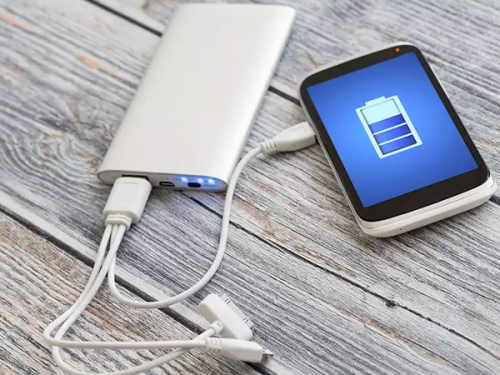As mobile applications become more integral to our daily lives, the need for securing these applications against various vulnerabilities becomes critical. Whether it’s social networking, online banking, e-commerce, or healthcare, mobile apps handle vast amounts of sensitive data. Without adequate security measures, this data can be exposed to unauthorized access, putting both users and organizations at risk. This article highlights essential techniques for securing mobile applications and protecting data from breaches.
Contents
1. Secure Data Storage
One of the most important aspects of securing mobile applications is ensuring that sensitive data is stored securely. Data stored in local storage or databases on mobile devices is vulnerable to attacks if not properly encrypted. Developers should avoid storing sensitive information, such as passwords, personally identifiable information (PII), or payment details, in plain text. Instead, strong encryption algorithms such as AES (Advanced Encryption Standard) should be used to protect data at rest.
Best Practices:
- Key Management: Properly manage and store encryption keys separately from the encrypted data. Using a secure key management system is critical to preventing attackers from obtaining both the data and the encryption keys.
- Tokenization: Replace sensitive data with tokens that have no meaningful value outside of the secured environment, ensuring that even if data is exposed, it cannot be used maliciously.
2. Encrypt Data Transmission
Data transmitted between a mobile application and a server is prone to interception, especially when the app communicates over unsecured networks like public Wi-Fi. Using SSL/TLS (Secure Sockets Layer/Transport Layer Security) protocols is a must for encrypting data in transit. It ensures that sensitive information such as login credentials or financial details remains secure from potential attackers attempting man-in-the-middle attacks.
Additional Considerations:
- Public Wi-Fi Risks: Educate users on the dangers of using public Wi-Fi to access sensitive apps. Developers should implement a VPN (Virtual Private Network) integration or recommend one for users accessing the app over public networks.
- Certificate Pinning: Use certificate pinning to protect against fake SSL certificates and mitigate man-in-the-middle attacks by ensuring the app connects only to trusted servers.

3. Implement Strong Authentication and Authorization
Mobile applications should use strong authentication mechanisms to ensure that only authorized users can access the app. This can include multi-factor authentication (MFA), biometrics (fingerprints, facial recognition), or time-based one-time passwords (TOTP). Additionally, proper authorization techniques should be in place to ensure that users only access the data and features they are permitted to. Role-based access control (RBAC) is one such technique that restricts user access based on their roles and permissions.
Additional Strategies:
- OAuth and OpenID Connect: Leverage these authentication protocols to delegate access securely, preventing the app from handling user credentials directly.
- Adaptive Authentication: Implement risk-based adaptive authentication that adjusts the authentication process based on context, such as location, device, or user behavior. This can help identify anomalies and reduce the risk of fraud.
4. Use Code Obfuscation and Integrity Checks
Mobile applications are often reverse-engineered by attackers looking to exploit vulnerabilities or gain unauthorized access to sensitive data. Code obfuscation is a technique that makes the app’s code difficult to understand, thereby reducing the risk of reverse engineering. Additionally, integrity checks can be implemented to ensure that the app’s code has not been tampered with. Hashing algorithms or digital signatures can be used to verify the integrity of the app’s code, alerting users or administrators if any unauthorized changes have been made.
Further Considerations:
- Runtime Application Self-Protection (RASP): Use RASP technologies that monitor the app during runtime and detect or block malicious actions as they happen.
- ProGuard for Android & iOS Obfuscation Tools: Utilize platform-specific tools for obfuscation and shrinking the code, adding an extra layer of protection against reverse engineering.
5. Secure API Communication
Mobile applications often rely on APIs to interact with back-end services. Securing these APIs is critical to prevent attackers from exploiting vulnerabilities in the communication channels. Strong authentication, rate limiting, and input validation should be implemented to protect APIs from attacks such as injection, DDoS (Distributed Denial of Service), and brute-force attempts. Using OAuth 2.0 and OpenID Connect can provide robust authentication and authorization for API requests.
API Security Enhancements:
- Input Validation: Always validate and sanitize user inputs to prevent injection attacks.
- Rate Limiting: Implement rate limiting and IP whitelisting to reduce the risk of brute-force attacks and prevent denial-of-service attempts on APIs.
6. Regular Updates and Patch Management
Mobile apps must be regularly updated to fix security vulnerabilities and address newly discovered threats. Developers should implement an efficient patch management process to ensure that security patches are applied in a timely manner. Additionally, encouraging users to install updates can reduce the risk of attacks targeting outdated versions of the app.
Developer Best Practices:
- Automated Update Systems: Use continuous integration/continuous deployment (CI/CD) pipelines to automate testing and deployment of security patches.
- User Education: Prompt users to update their apps regularly and highlight security reasons for doing so. Clear, non-technical explanations can improve update adoption rates.
7. Secure Session Management
Proper session management is essential for preventing session hijacking or replay attacks. Sessions should be time-bound and terminated after periods of inactivity. Session tokens should be stored securely and transmitted over encrypted channels to prevent unauthorized access. Implementing secure logout functionality and ensuring session tokens expire after logout are important steps in maintaining session security.
Advanced Techniques:
- Token Rotation: Implement token rotation, where tokens are regularly refreshed to reduce the risk of using stolen or compromised tokens.
- Secure Storage of Tokens: Use secure storage mechanisms like Keychain for iOS or Keystore for Android to store tokens safely, reducing the risk of them being extracted by malware or unauthorized users.
8. Mobile Device Security
Beyond securing the mobile app itself, it’s essential to consider the security of the device on which the app is running. Encourage users to enable device-level security features such as passcodes, biometric authentication, and device encryption. Additionally, apps should detect and respond to potential threats such as rooted or jailbroken devices, which can expose sensitive data to attackers.
Device-Level Measures:
- Jailbreak/Root Detection: Implement security features that detect rooted or jailbroken devices and restrict app functionality accordingly.
- Remote Wipe: Offer users the ability to remotely wipe sensitive app data in case the device is lost or stolen.
9. Penetration Testing and Security Audits
Regular penetration testing and security audits are crucial to identify potential vulnerabilities before they are exploited. External experts can simulate attacks on the application, uncovering hidden weaknesses and ensuring the app complies with the latest security standards. As a leading App Development Company, we emphasize the importance of regular penetration testing and security audits to identify vulnerabilities, ensuring that applications remain secure and compliant with the latest cybersecurity standards.
Pen Testing Best Practices:
- Third-Party Audits: Engage external cybersecurity experts to perform unbiased security audits.
- Continuous Monitoring: Integrate continuous monitoring tools to detect and respond to real-time security incidents.
Conclusion
Securing mobile applications requires a comprehensive approach that combines secure coding practices, encryption, strong authentication, and regular updates. By implementing these essential techniques, developers can protect sensitive data, maintain user trust, and safeguard their applications from emerging security threats. As mobile applications continue to grow in popularity and sophistication, staying vigilant against potential vulnerabilities is key to long-term success.



